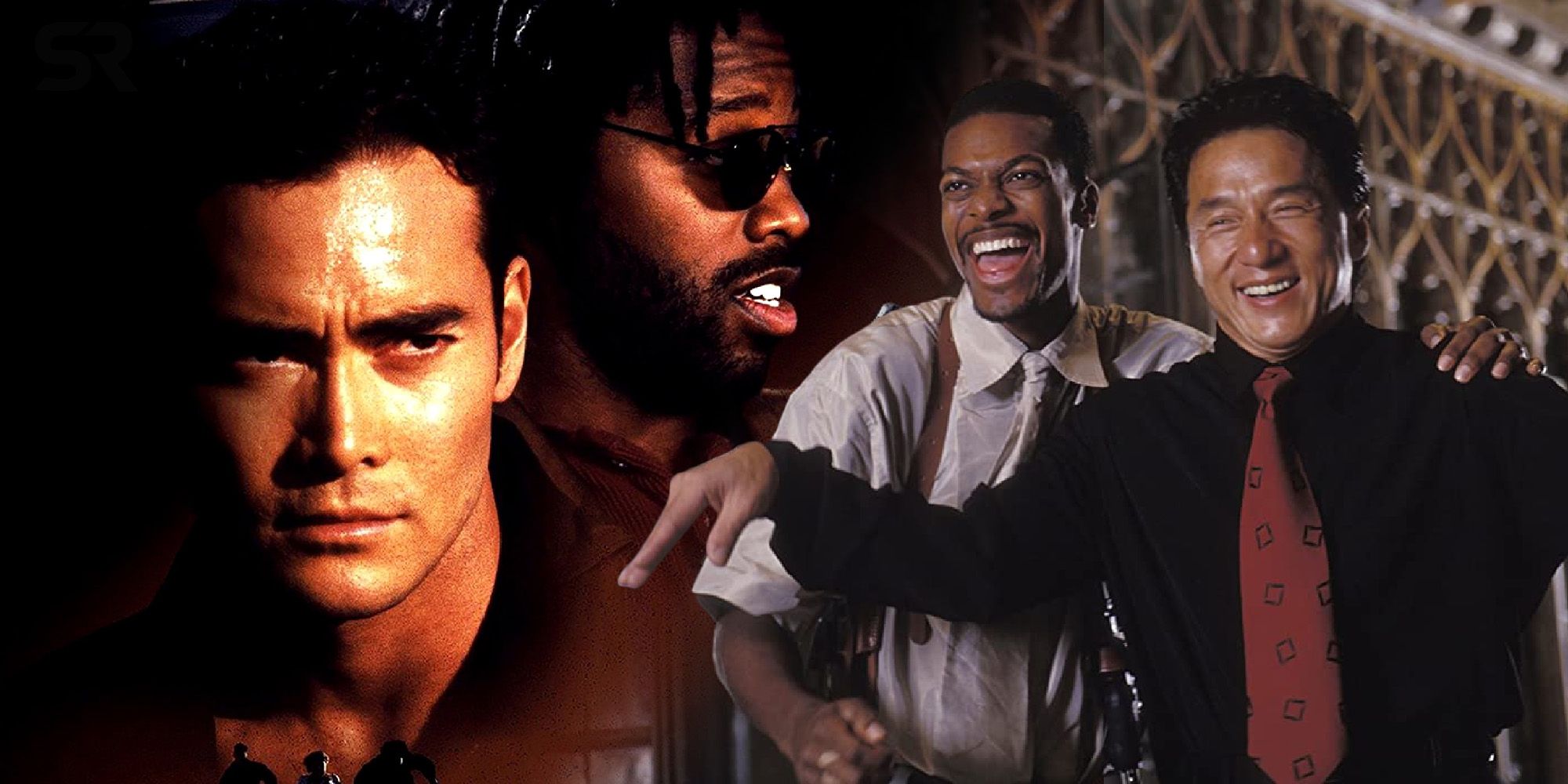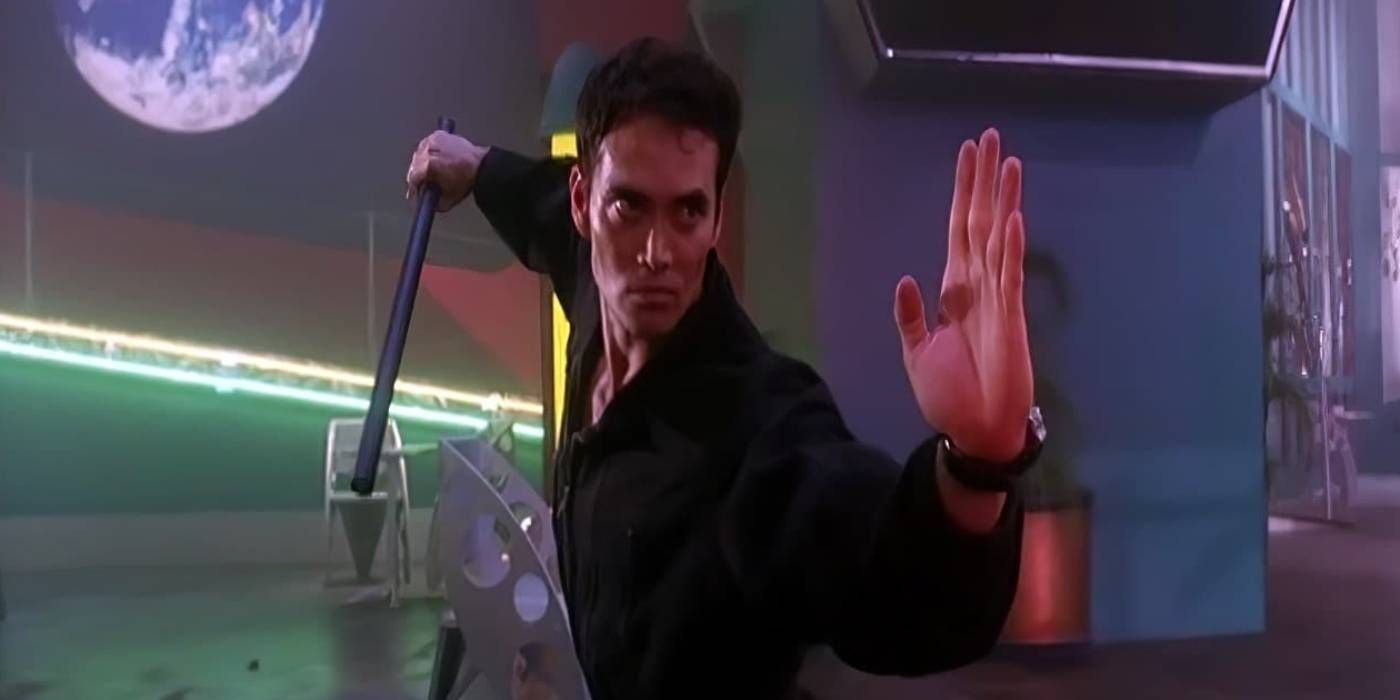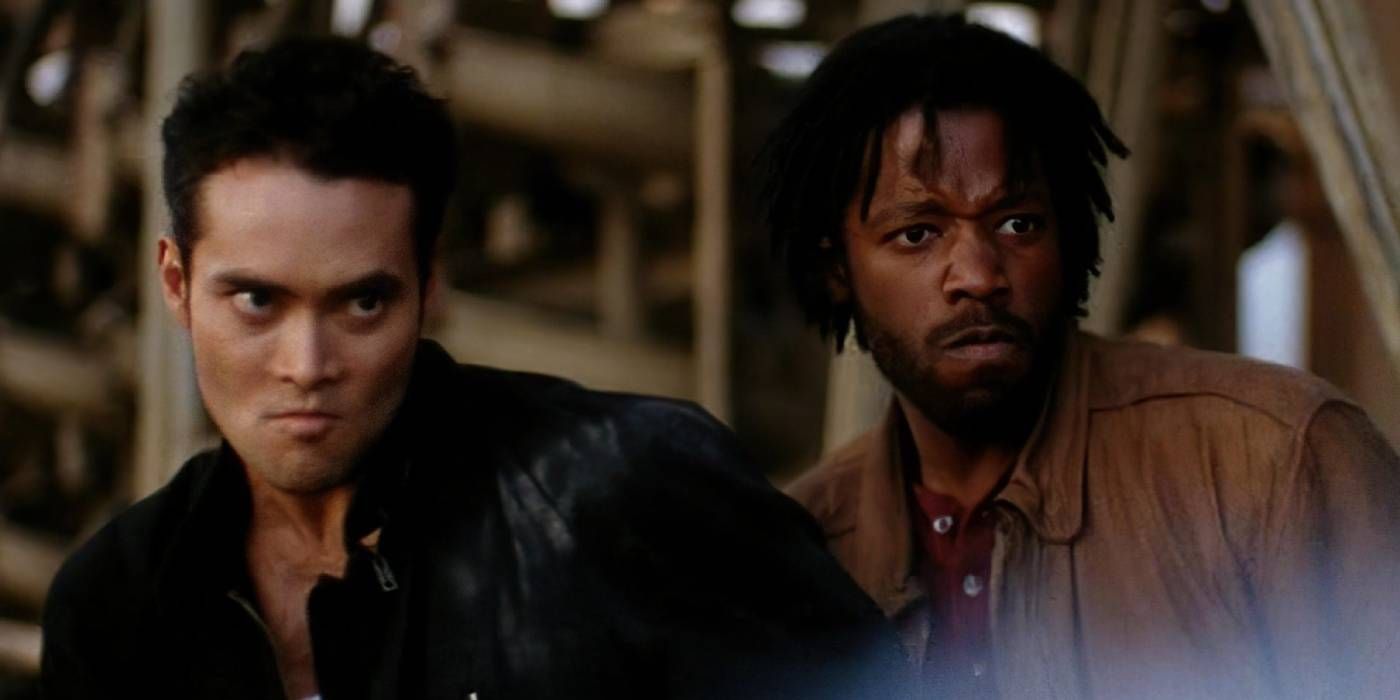The low-budget 1997 action-comedy Drive is set the stage for the success of the Rush Hour movies. Coming on the heels on Rumble in the Bronx, the first Jackie Chan movie to achieve significant success in North America, Rush Hour solidified his leap from Hong Kong to Hollywood with the comedic fireworks between him and Chris Tucker. Two sequels and a short-lived TV reboot would follow in the ensuing years, but they didn't manage to catch the same lightning in a bottle as the original did. However, another, more low-key release known as Drive did.
A straight-to-video release back when that was seen as a bad sign, Drive was directed by Steve Wang, and starred Mark Dacascos and Kadeem Hardison as Toby Wong and Malik Brody, on the run from a band of mercenaries trying to prevent Toby from selling the biological enhancement in his chest for a $5 million price tag. Also starring the late Brittany Murphy as the energetic motel manager they meet along the way named Deliverance, Drive has earned plenty of comparisons to Rush Hour over the years, and among martial arts fans, it remains a cult classic to this day.
While the buddy-movie blueprint of Drive runs parallel to that of Rush Hour, they're still two very different movies. What's more noteworthy, though, is that fact that, by preceding the release of Rush Hour, Drive set the stage for its success — while also having plenty to stand apart from it.
Drive Put A Sci-Fi Spin On The Rush Hour Formula
Looking at the different variations of the box art of Drive, it wouldn't look like anything to write home about on the surface. One cover design in particular makes it look more like a buddy cop movie with an automotive angle. Aside from the basic road trip element of the story, Drive tells a completely different story of Toby Wong as a former Hong Kong government agent augmented with a "Biologicial Energy Module," or "Bio-Engine" that greatly enhances Toby's physical capabilities. While Drive was following a similar buddy movie template as Rush Hour, this also made it stand apart from it and the subsequent sequels.
Working on a low budget, Drive wasn't able to dive into more outlandish sci-fi or futuristic elements, but this still made it unique from what the more grounded action-comedy that Rush Hour series was presenting — especially with the arrival of the Advanced Model, played by Masaya Kato, to give Toby a run for his money. However, that's only one third of the equation of what made Drive so fantastic.
Drive's Action Scenes Were Out Of This World
As mentioned earlier, there was a time when straight-to-video action movies lived in the shadow of their counterparts on the big screen. These days, the outlook on action movies sitting out theaters has all but completely flipped, but Drive was way ahead of its time in this regard. At a time when the lack of a theatrical release was, at best, frowned upon, Drive was leaving theatrical action movies in the dust with some of the most astonishing martial arts battles ever seen in an American-made action film, assembled by Koichi Sakamoto and the Alpha Stunts Team, well-known for their work on Mighty Morphin' Power Rangers.
Drive was essentially a Hong Kong movie made in the States, and it also carried the DNA of Jackie Chan in the way it built upon its action scenes, making them progressively longer and more insane, especially in the motel battle and the finale in the Apollo 14 restaurant. Furthermore, Drive was also very clever in its implementation of "wire-fu," showing the heightened physical prowess of Toby and the Advanced Model without making the wirework feel too dance-like or sacrificing the power of the action. Long before the stigma of straight-to-video began to dissipate, Drive was paving the way for that to happen and gloriously defying expectations as it did.
The Core Of Drive Was Its Buddy Movie Banter
The biggest comparison point between Drive and the Rush Hour series is the chemistry between Mark Dacascos and Kadeem Hardison as Toby and Malik, and this was what made the movie something special. The comedic banter between Dacascos and Hardison was what really made Drive work, and the movie also had a firmer grasp on how to make this crucial aspect of its formula jump out. Drive showed Toby as the straight man and martial arts fighting machine of the two, while Malik was the comic relief — but it also showed the growth they would experience through their journey, each gradually exhibiting more of the traits of the other.
Malik's vexation at being pulled into Toby's conflict is the source of many of the movie's best jokes and one-liners, but Malik's confidence also grows traveling alongside Toby, with Malik coming realize that he's not the screw-up that he believed he was when he and Toby first cross paths. Toby himself also takes on more of Malik's light-heartedness, bopping along with Malik to Intellect's "Where's the Party At?" and even admonishing Malik to return to his estranged wife in a song and dance number. Drive may have had action scenes lightyears ahead of its straight-to-video format, but Toby and Malik's growing bond, the growth they experience through each other, gave the movie its heart. Add in Brittany Murphy's slow-witted but high-spirited Deliverance, literally cheerleading Toby in the motel battle, Drive was as sharp on comedy as it was on action.
Over 20 years after its debut, Drive hasn't lost one ounce of the energy that it landed with. The movie's martial arts action still puts many theatrical action movies to shame, Mark Dacascos and Kadeem Hardison are still a superb, and hilarious, buddy movie duo, and the movie remains one of the earliest examples of the straight-to-video label becoming a true badge of honor. All these years later, the movie's cult status makes it a real gem to be found anytime a newbie stumbles upon it, but one of its most stealthy achievements is also the fact that Drive is an absolute must-see for any fan of the Rush Hour movies.




